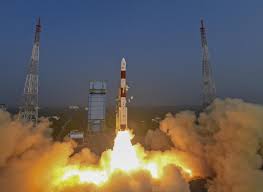- In orbit, the Indian orbit Research Organisation (ISRO) successfully tested a 100 W class Polymer Electrolyte Membrane Fuel Cell based Power System (FCPS).
- The FCPS was a component of the POEM3 orbital platform, which was launched by PSLV-C58 on January 1, 2024.
Concerning the FCPS Experiment
- The experiment’s primary goal was to evaluate the operation of Polymer Electrolyte Membrane Fuel cells in space and provide data for future mission designs.
- Power Generation: During the test, 180 W of power was generated utilising Hydrogen and Oxygen gases, providing significant information on the power system’s performance.
About Polymer Electrolyte Membrane (PEM) Fuel Cells
| Details | |
| Basic Principle | Converts hydrogen’s chemical energy into electrical energy, creating water and heat as byproducts. |
| Key Components | Bipolar Plates Membrane Electrode Assembly (MEA) Platinum-based Catalyst Gas Diffusion Layers (GDLs) |
| Operation | Hydrogen Oxidation: Hydrogen molecules (H2) are divided into protons (H+) and electrons (e-) at the anode.Proton Conduction: The PEM lets only protons to travel through to the cathode, preventing electrons from passing through. Electron Flow: An electric current is created when electrons pass through an external circuit to the cathode. Oxygen Reduction: Oxygen molecules (O2) from the air interact with protons and electrons at the cathode to create water (H2O).Heat Production: The reaction produces heat, which can be used to heat some applications. |
| Types of Membranes | Membranes made of perfluorosulfonic acid (PFSA) (common) Membranes based on hydrocarbons (alternative) |
| Advantages | Power density is high. Operating temperatures in the 60-80°C rangePure hydrogen produces no emissions. |
Space and Society Applications
- Multipurpose Space Use: Fuel cells are ideal for human space missions since they provide critical power, water, and heat from a single device.
- Benefits to Society: They offer a high potential for societal applications, including as replacements for conventional car engines and standby power systems.
- Benefits over Batteries: Fuel cells have comparable range and refuelling periods to conventional engines and are projected to provide emission-free transportation.
Source: https://www.gasworld.com/story/isro-successfully-tests-hydrogen-fuel-cell-in-space/2132178.article/#:~:text=The%20project%20saw%20ISRO%20test,vehicle%20on%201st%20January%2C%202024.

